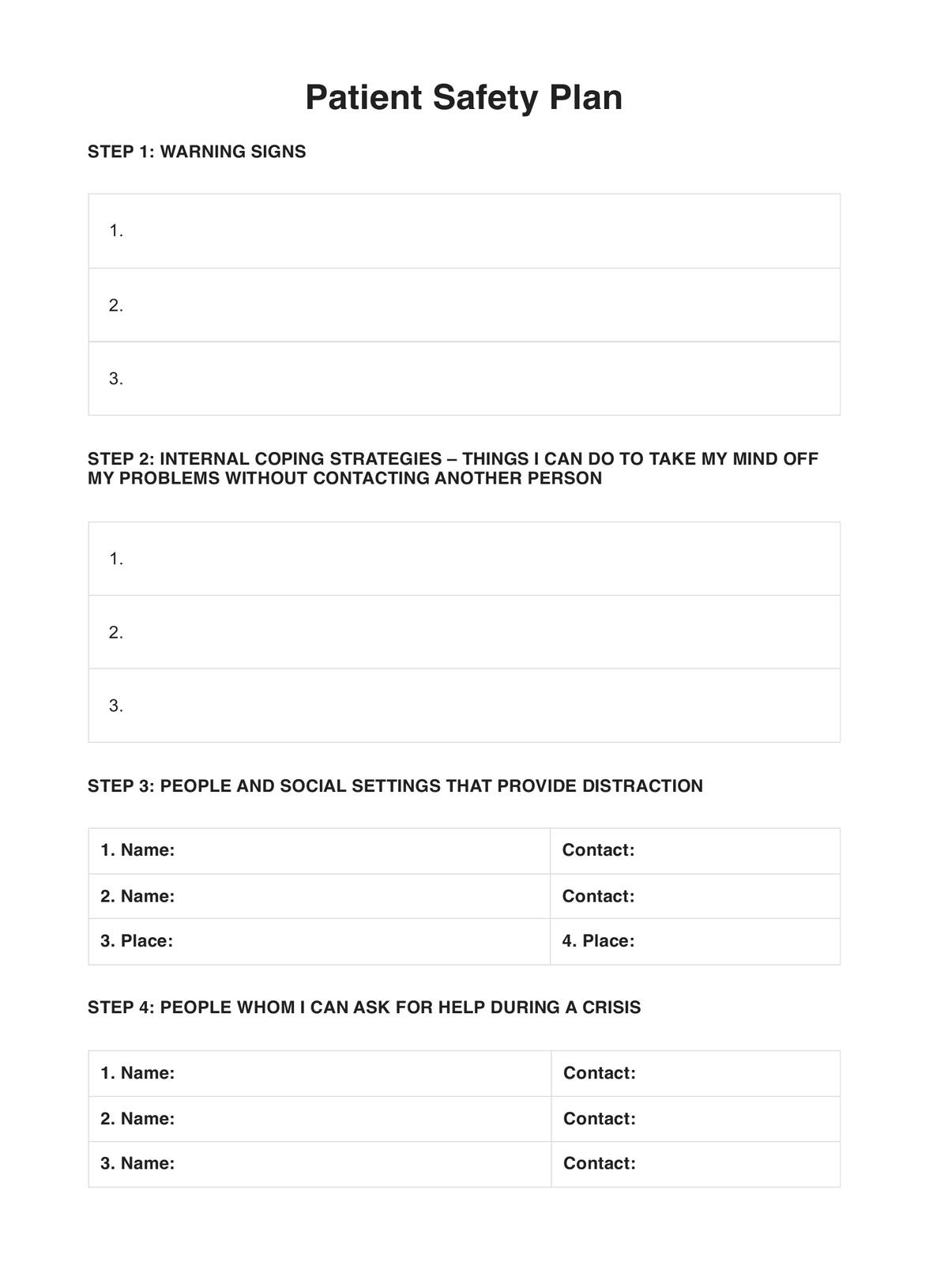A safety contract in therapy is a written agreement between the therapist and client that outlines specific actions to be taken in situations where the client feels unsafe or at risk of harming themselves or others. This contract helps establish clear boundaries and expectations, ensuring both parties know the steps to take in emergencies. It can include details such as emergency contact information, crisis hotline numbers, and specific actions to be taken by the client or therapist in times of distress.

Safety Plans
Understand the intricacies of Safety Plans, their significance, and how to utilize them for crisis management effectively. Download our free Safety Plan template.
Safety Plans Template
Commonly asked questions
A clinical Safety Plan is a comprehensive document that outlines strategies and interventions designed to prevent or mitigate harm to the client or others. This plan may include medication management, crisis hotline numbers, emergency contact information, and strategies for managing triggers and coping with distress.
To write an effective Safety Plan, identify potential crisis situations and the client's specific needs and triggers. Collaborate with the client to develop a comprehensive plan with specific steps to respond to each situation. Ensure the plan includes emergency contact information, crisis hotline numbers, and strategies for managing triggers and coping with distress. Regularly review and update the plan with the client to ensure it remains relevant and effective in preventing or mitigating harm.
EHR and practice management software
Get started for free
*No credit card required
Free
$0/usd
Unlimited clients
Telehealth
1GB of storage
Client portal text
Automated billing and online payments











